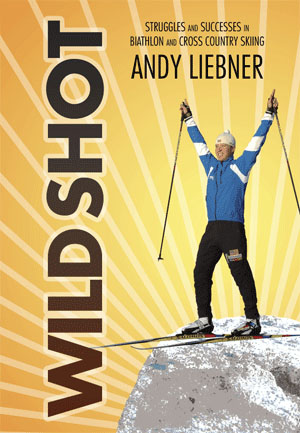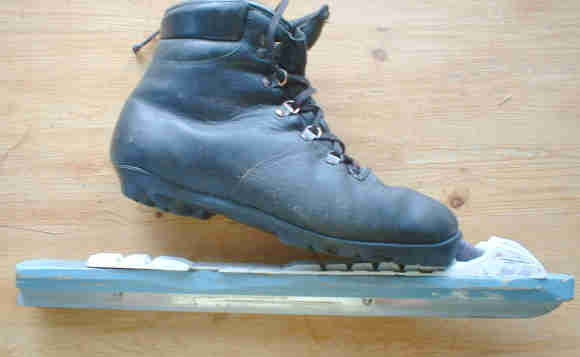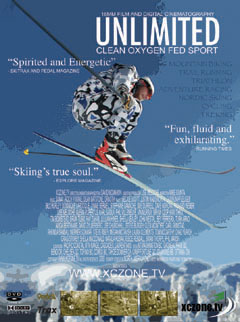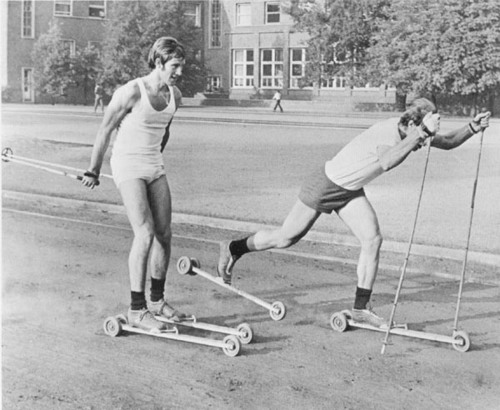Author: Mitch Harris
[Intro Note: Mitch Harris is a fellow member of the iBOB e-list that I participate in.
Early this winter I posted an idea to that list that XC skiing was maybe in a similar boat to biking—that some forces were carrying it away from its roots—to the detriment of folks who just wanted to get out there and enjoy the motion. But that there was solid interest out there in the all-rounder aspect of XC just like there is in cycling.
Mitch posted the following replies which I’ve here strung together since they seem to contain ideas that build onto each other.
He has some ideas that mesh with what I’ve presented here plus they add more from his own experience. –JP]
*****
I think Jeff is on the right track [in saying that beginners are taking over XC skiing even though elite skills are played up in other outdoor sports like mtbiking], and add that it would be much
easier to teach beginners on the short skis. Falling down, getting up,
doing the first scissor kicks and herringbones—all these would be a
better quicker experience to learn and teach in a class. Makes me
wonder, given how weird and small the XC ski market is, whether XC
resort ski instructors and rental buyers have had a big influence on
establishing these short skis as the mainstay. My own emphasis when I
teach someone is how to feel that moment where you glide on only one
ski at a time, every bit of your weight on that one ski. I know that
instructors develop this efficient process where they want the class
to do the skill correctly and soon, and are much less concerned with
how well they do it. So on short skis you could have a class of
beginners, gliding (poorly due to the ski) soon, and
scissoring/herringboning/getting up after a fall very quickly and
efficiently. Instructors will leave the development of quality gliding
for later, and you may be right that the equipment not only won’t
encourage that development but may prevent it.
I’ve also noticed, in the XC resort/teaching/grooming/rental business,
a strong preference for skating so that beginners are intended to
graduate to a skate ski kit as soon as possible. Classic striding is
seen as being a throwback for older folks, children, people without
sufficient condition for skate—beginners generally. And from this
view, people who tramp off on skis outside of groomed tracks, they are
irrelevant and should be on snowshoes as far as the XC
resort/teaching/grooming/rental business is concerned.
***
I used to sell XC and tele skis at a long-established family owned
climbing/skiing/camping store in Cleveland and I would get to talk to
reps sometimes and hear what they thought of the market, who’s buying
what and why. I was always amazed at how little they were interested
in feedback from ordinary skiers who were buying skis individually.
They seemed to feel satisfied with feedback they got from instructor
groups, XC resorts (however few there are) and rental shop buyers,
especially rental shops at trail heads somewhere they also offer
instruction. I’d tell them customers had major doubts about the
one-short-size-fits-all skis, and that shop sales people were at a
loss for how to talk people into them except for rank beginners.
They’d smile and say, “That’s what the resorts and instructors want,
and they’re having good results selling people on the idea” as though
it was a sales problem. Maybe it was 😉
But I could talk to the same reps about what the grassroots buzz on
tele skis was and they were all ears: “So you’re saying even taller
people are buying these 180s?! …What boots are they using? …How
tall are the folks who are buying 170s? …What are women
buying? …What did you think when you skied the Black Widow? …How
about the Telepathic? …Why do you still like leather boots? …Which of
the plastic tele boots feels best to you?”, etc. They saw grass
roots individual buyers as the core market for tele but for XC they
disregarded the individual buyers somewhat. The ski reviews in
magazines reflected this too—the XC magazines and BackCountry reviews were like press releases—“Here’s the great new concept this year…”
But read the tele ski reviews in Couloir and it’s all about the
individual skier, what he wants to buy and how to get the ski he wants
for his individual needs.
This was mid 90s.
***
Jeff asks about the new mid-length skis and I’ve tried them and like
them fine. They don’t have nearly as much glide, and they don’t track
as straight, but they turn more easily. Jeff points out how different
race skis are now from the skis marketed to recreational skiers and
here’s why I think that is. If you go out with beginner XC
skiers/occasional XC skiers who have to reaquaint themselves with
technique and equipment when they head out, you notice that 1) they
experience and express lots of awkwardness about static maneuvers
(kick turns, herringbone stepping, side-stepping), 2) they have lots
of anxiety about speed and very soon feel out of control in any
downhill turning situations, and 3) they are pleasantly surprised and
satisfied with any modest amount of real gliding they can do as they
move from the shuffle to being able to step fully onto a gliding ski.
So ski makers don’t impress these users much if they produce a ski
that has more glide than the next. The average user has lower glide
expectations than Jeff by far. Those users probably associate speed
with skating nowadays anyway.
But those users are quite impressed with a ski that is more easy to
kick turn ( e.g. you hear “That’s much easier than the skis I rented
here last year”) and that is easy to ski around that scary fast
sweeping turn (e.g. “Last year I fell on that turn every lap but this
time I could stay up—these skis are great!”).
So you see fast full length racing skis, and shorter slower
recreational skis that are easy to turn and kick. Only former racers
like Jeff and grizzled retro skiers seem to notice.
This is one area in free heel skiing that has been harmed a bit,
perhaps, by the wider awareness of the telemark turn and introduction
of telemark gear. Now track and trail skiers expect a ski to turn. Old
instructional books on XC track and trail skiing assumed you’d get
out of control on any fast downhill, and assumed you may well not make
the turn. They were full of instructions on sitting down and bailing
in fast downhill turns, putting poles between the legs, etc. They
would say that XC is like riding a bike with pedals but without
brakes (as opposed to alpine skiing which is like riding a bicycle
with brakes but without pedals). Telemark gave us both in the same
skiing method—Yea! But now recreational XC skiers in tracks or
trails don’t seem to be as willing to grit and wince their way through
fast sketchy icey dicey turns on long stiff skinny double cambered
skis. For old style skiers and racers this is a small price to pay
for glide and speed in the straights—something you addressed with
skill and experience, not by dumbing down the equipment. Ok, that last
comment shows my take on the trend, but it’s hard to fault the
distressed ski industry for supplying recreational skiers with new
stuff that delivers more glide than they expected as well as easier
turning and stepping than they expected.
Waxable vs. waxless has the same market effect. Waxing is quick and
easy once you learn and get to know your conditions a little. But it
seems daunting to beginners and means more work, more stuff to buy,
more to pack or forget, more mistakes to make. The only disadvantage
of waxless is less glide—and that is where recreational skiers have
the lowest expectations anyway. So the only way to sell new skiers on
waxable skis is to promise the “glide joy” that Jeff talks about, but
in response, consumers are often saying, “But what if I go too fast;
what if I can’t stop?” Speed is a much harder sell than ease and
comfort.
(That said, there are of course those maritime climes where the snow
is always at the freezing melting point that is difficult to wax for,
and where waxless skis come into their own.)
Using a cooking analogy, think how for some cooks a wide availability
of fresh spices is part of the joy of it. That’s like me or Jeff
enjoying using different waxes and klisters—part of the pleasure and
skill of skiing, and not hard once you try it. But other cooks are
relieved to find that Mortons has a little jar of dried basil and
prefer that over having to get or grow the fresh stuff. They are even
more relieved to find a jar of dried spice-like stuff labeled “Italian
spice,” and prefer dried ground garlic, wondering why someone would go
to the trouble to peel and smash garlic cloves.
Actually, what I should have said about the midlengths is that I was willing to sell
them (shame on me ;-), not that I’d be willing to ski them much. I
tried them on several demo days and realized that they did glide
enough that people could probably be taught to glide on them. What
bugged me is that none of the info or reps would be straightforward
with why they were being offered. They kept saying the new midlengths
were a step forward, an advancement and I kept asking, Why? How are
they an improvement? They wouldn’t say. Then as you work with them,
and the customers, you realize why. I wish the reps had just said that
they did the research and found that the new market was made of people
are timid on skis, afraid of speed and of getting tangled in long
skis, who seemed pretty satisfied with shuffling and were not very
ambitious about learning to progress past shuffling so that some glide
was enough. I’m with you about glide joy. The only concession I think
they should make for beginner track skis is make them a little wider
(50-60 tips) than race skis with a more forgiving wax pocket, a little
less stiff or less cambered, so that you don’t have to stab it so
perfectly to get the kick.
The glide joy is the thing that bugs me about how popular snow shoes
are—the market sees them as interchangeable with XC skis but easier,
as though they are two different ways of shuffling.
Honestly, I resist a bit the
idea of dedicated skating, preferring a style where you can skate and
stride on the same gear. Maybe that’s the BOB side of me, always
touring on a classic racing bike, liking the idea of the versatile
bike that does everything well enough.






